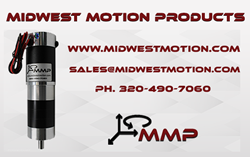How Automation in the Food Supply Chain Boosts Output and Ensures Continuity
This Press Release explains the need for automation in the food supply chain. Incorporating automation in the food supply chain boosts productivity and ensures continuity. Further, the article puts emphasis on making the food supply chain transparent and visible. Since automation facilitates improving the revenue and makes the process faster as compared to manual management of the food supply chain. Therefore, making a robust system from producers to consumers.
The supply chain is an essential fragment of the production and distribution system. With the lack of a robust system to transmit fresh produce from the farm to your plate, all stakeholders, right from farmers to consumers, will face tough challenges. Traditionally, supply chain management in India was largely relying on manual labor and techniques. However, the emergence of automation in the food supply chain and businesses in this industry have played a vital role in changing the face of this significant process. These organizations have added to the strategy of supply chain management, the concept of automation.
Automation benefits from technological solutions and data to build the existing model more efficiently, transparent, less labor intensive, profitable, and quick. As farmers and retailers become more aware of the advantages of automation, their eagerness to implement these disruptive methods is on the rise. Several governments have also initiated tech-enabled systems such as the Agricultural Market Information System (AMIS). It is a centralized platform that can be accessed by all authorized agencies to augment the transparency and continuity of the food market. The data stored in this platform is also utilized to create policy decisions and identify effective resolutions for the prevailing challenges plaguing the food industry.
Automation in the Food Supply Chain
One of the major technologies that have changed the face of the consumable commodities segment is blockchain. It facilitates the creation of an extensive record of all transactions, transfers, and movements that take place in the complicated supply chains of today. Initially, this task was executed manually. Subsequently, leading to several frauds, verification issues, errors, and losses in the supply chain. Blockchain is free of all these pain points and establishes a secure atmosphere, wherein accurate data is exchanged. Simultaneously, eliminating the unexplained discrepancies that happened in the traditional supply chain.
Another technology that is becoming popular is RFID technology. It surpasses beyond merely tracking the fresh produce and goes on to give 100% visibility and transparency throughout the entire stages of the automation in the food supply chain. Contrasting to the bar code trackers, RFID brings with it several other parameters like temperature monitoring to make sure that the quality of the produce stays intact. Fruits and vegetables are tagged at the source point. At any given level, if the tag is scanned, one can get all the data relevant to the movement of the food items. Data like who handled the crate is also readily available with the aid of RFID.
When it comes to the production and supply of fresh produce, time is an important factor. The longer the items stay in transit after harvest, their freshness decreases. Internet of Things (IoT) is responsible for changing legacy devices into smarter, integrated, and well-networked equipment for carrying out various tasks. For example, automated sensors are utilized across the supply chain for monitoring, tracking, and increasing efficiency. IoT has simplified identifying and rectifying mistakes, thereby decreasing unnecessary wastages.
Machine Learning (ML) and Artificial Intelligence (AI)
Technologies such as Machine Learning (ML) and Artificial Intelligence (AI) have also contributed hugely toward modernizing the supply chain. To start with, AI and ML have extremely decreased labor costs by changing repetitive manual tasks with smart machine-based solutions. Moreover, they have even cut down the response time to any issue by offering immediate and effective solutions. These technologies thoroughly note and pinpoint the slightest variation in the regular course of movement. Thereby, nipping most problems in the bud. Vehicle route optimization has also been possible with the aid of GPS technology and artificial intelligence. It will not be wrong to say that Industry 4.0 will be fueled with new-age business models born out of real-time data analyzed by AI and ML.
Automation has encouraged the effective management of both supply and demand. Producers can create informed decisions and even choose the markets as well as rates at which they desire to sell their produce. On the other hand, consumers can easily get all the information about the products they wish to buy. It is safe to establish that automation in the food supply chain has made a win-win situation for all stakeholders.
Conclusion
The pandemic has emphasized the requirement for sheer automation in the food supply chain of the logistics and supply chain workflows. It has shown how technology facilitates business continuity in such hours of despair. A transparent logistics system and supply chain without drawbacks and with sheer visibility is the need of the hour.
Kindly visit our website for further information -Â https://www.aeologic.com/
Featured Product

